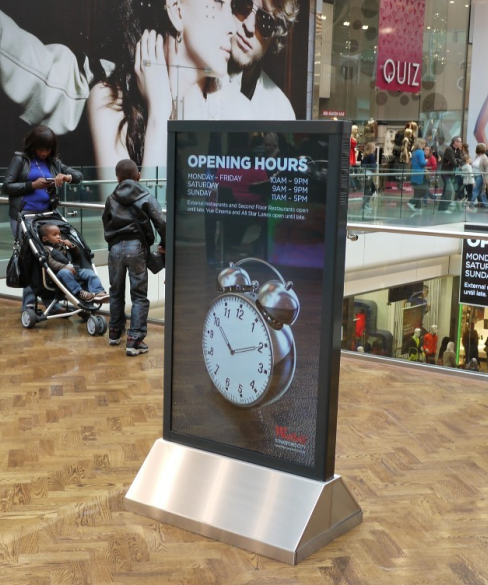
custom Support & Sale
+86 180 2877 9262

Working Time
Mon-Sat: 08:00-18:00

In today’s competitive retail landscape, digital signage has become a powerful tool to attract customers and boost sales. While consumer-grade TVs might seem like a cost-effective choice, commercial-grade displays are purpose-built for business environments. Here’s a detailed comparison across performance, design, cost, and long-term benefits to help you make an informed decision.
Ø Durability & Longevity:
Commercial displays use robust components (e.g., industrial-grade LEDs, enhanced cooling systems) , engineered for 24/7 operation withstanding continuous use without overheating or image burn-in. Unlike TVs designed for intermittent home use (typically 4-6 hours daily).
Ø Brightness & Visibility:
Commercial screens normally feature higher brightness levels (300 - 600 nits for indoor; 2500 nits- higher for outdoor) compared to TV’s (200-500 nits), ensuring clear visibility even in brightly lit storefronts or direct sunlight.
Ø Color Accuracy:
Advanced calibration tools on commercial displays maintain vibrant, consistent lors over time, critical fro brand consistency. TVs may loos color accuracy after extended use.
Ø Content Management:
Built-in media players, HDMI ports, and network capabilities allow seamless integration with digital signage software (like Split-screen layouts, Program scheduling etc.) and remote updates via CMS platforms (e.g, BrightSign, NoviSign), eliminating the need for external devices like set-top boxes.
Commercial displays prioritize adaptability to diverse retail needs:
v Slim Bezels & Modularity: Seamless video walls for immersive branding (e.g., 3.5mm bezels vs. TVs’ bulky frames).
v Versatile Mounting: Portrait/landscape orientation, ceiling mounts, and outdoor-rated enclosures (IP55/IP65).
v Anti-Glare & Wide Viewing Angles: Ensure clarity from any angle, critical for crowded stores.
While TVs often have thick bezels, limited mounting options, and narrow viewing angles, making them unsuitable for professional setups.
While TVs have a lower upfront cost ($300–$1,000), commercial displays deliver better ROI over time:
² Lifespan : Commercial screens last **50,000–100,000 hours** (vs. 20,000–30,000 hours for TVs).
² Lower Maintenance : TVs require frequent replacements in high-use scenarios, increasing downtime and labor costs.
² Warranty & Support : Commercial displays often include 3–5-year warranties with dedicated technical support.
Example: A $2,000 commercial display running 12 hours daily lasts ~11 years, while a $800 TV lasts ~4.5 years.
ü Customization : Tailor content layouts (e.g., product promotions + social media feeds) and integrate sensors (e.g., foot traffic analytic).
ü Reliability : Operate in extreme temperatures (-20°C to 50°C) and resist dust/moisture.
ü Security : Lockable ports and tamper-proof designs prevent unauthorized access.
TVs lack these professional features, limiting their utility in dynamic retail environments.
u Fashion Retail : A luxury brand uses commercial video walls to showcase runway videos, increasing dwell time by 40%.
u Restaurants : Digital menu boards with real-time updates reduce perceived wait times and upsell combo meals.
u Outdoor Kiosks: Weatherproof displays drive foot traffic with promotions, unaffected by rain or glare.
While TVs offer short-term savings, commercial displays deliver superior performance, reliability, and scalability for businesses. Their ability to handle continuous use, withstand harsh environments, and integrate seamlessly with digital signage tools makes them a wise long-term investment. By choosing a commercial display, you’ll enhance your brand’s visibility, engage customers effectively, and reduce operational headaches—ultimately boosting your bottom line.
Contact us today for a free consultation on the best commercial display solutions for your store!